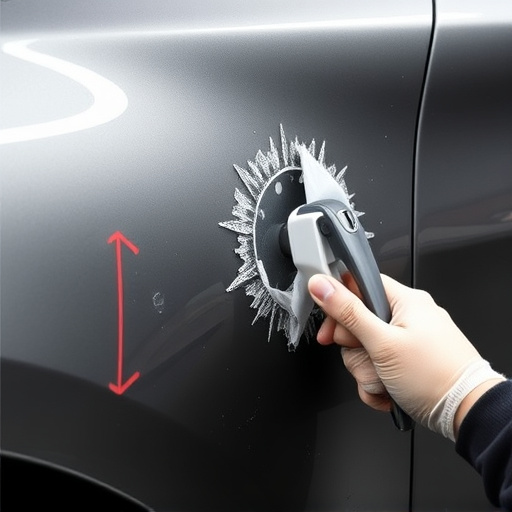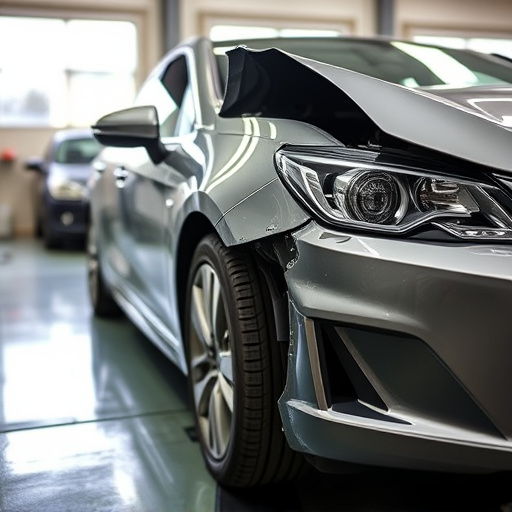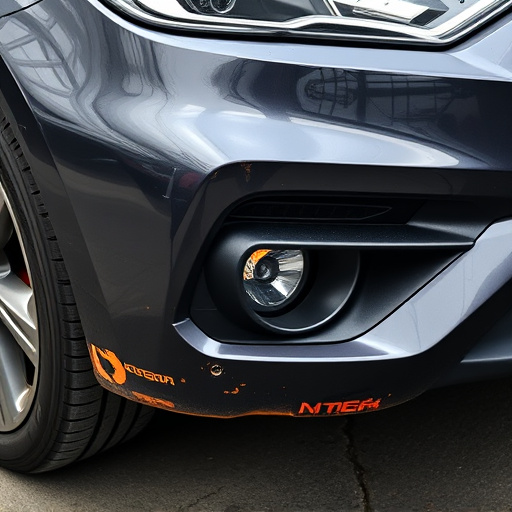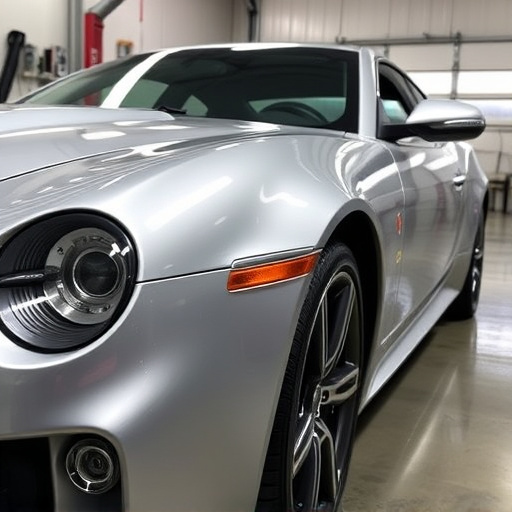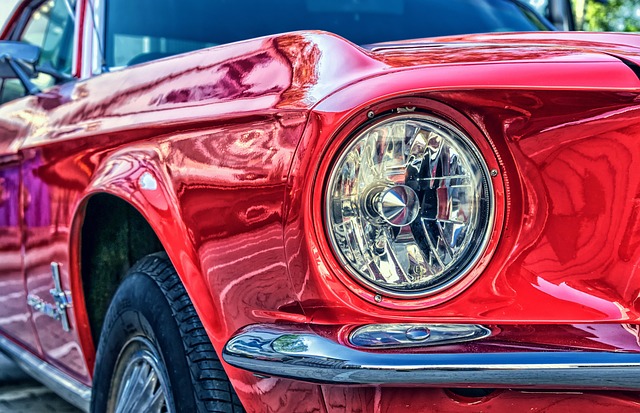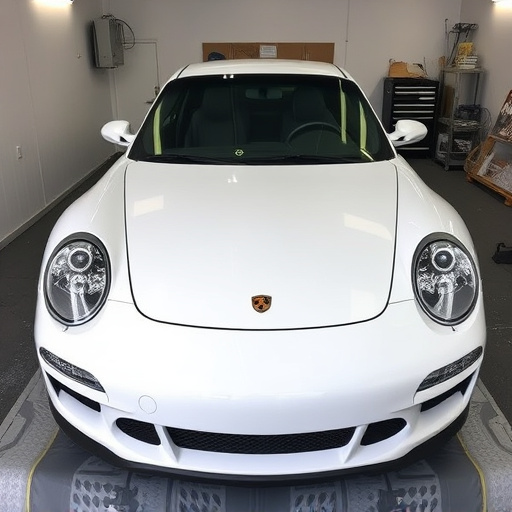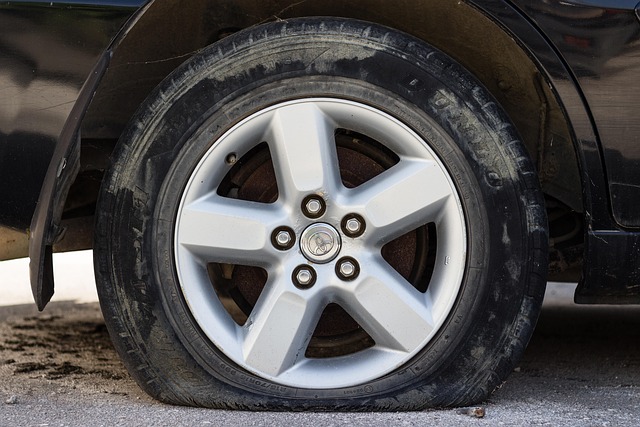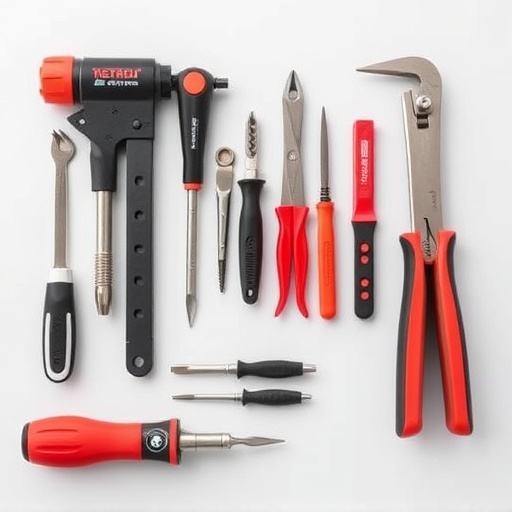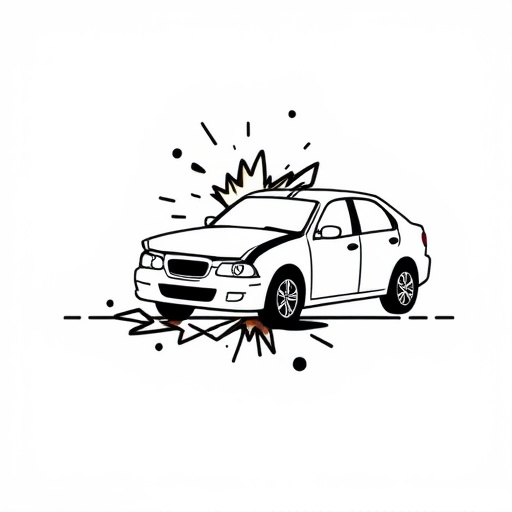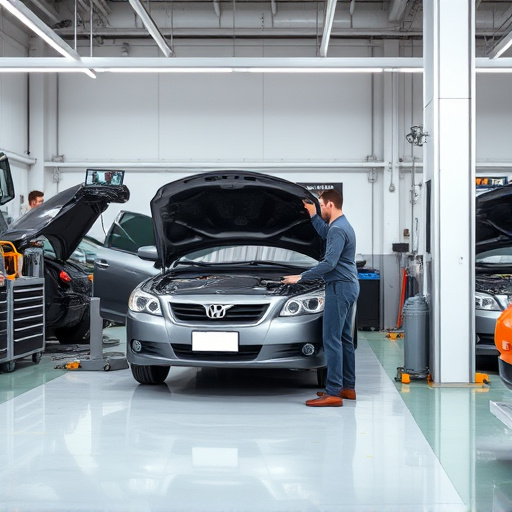Candy paint collision repairs present a unique challenge due to their delicate, transparent nature with vibrant color pigments. Skilled technicians use advanced techniques and specialized tools to precisely remove damaged layers without affecting the base or clear coats, while protecting against UV light exposure. The goal is to match original aesthetics and ensure long-term durability, requiring an understanding of candy paint's tendencies to chip or fade for seamless blending with undamaged areas.
In the realm of automotive restoration, candy paint collision repairs stand out as a unique challenge. This specialized service is increasingly sought after due to the popularity of candy paints—high-gloss finishes known for their vibrant, iridescent effects. Unlike traditional paints, these innovative coatings demand meticulous handling during collision repair.
The complexity lies in perfectly matching the original finish while addressing issues like chipping, scratches, and misalignment. Skilled technicians armed with specialized training, tools, and expertise are indispensable. Their mastery ensures long-lasting results that not only restore but enhance the vehicle’s aesthetics, a crucial aspect of candy paint collision repair.
- Understanding Candy Paint: A Unique Challenge
- – The nature and composition of candy paint
- – Differences from traditional paints and finishes
Understanding Candy Paint: A Unique Challenge
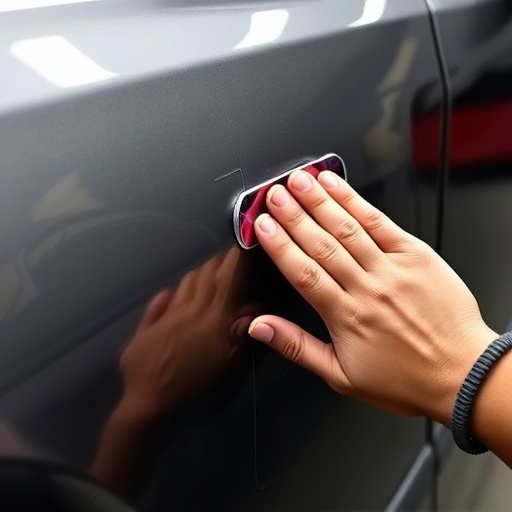
Candy paint collision repairs present a unique challenge for automotive technicians due to its distinct and delicate nature. Unlike traditional paints, candy paint is often transparent, with vibrant color pigments suspended beneath. This intricate design means that even minor damage can cause significant changes in appearance, requiring precise and skilled repair. The process involves careful removal of the damaged layer without affecting the underlying base coat or clear coat, a task that demands specialized tools and expertise.
Furthermore, candy paint is susceptible to UV light exposure, which can cause fading and cracking over time. This vulnerability necessitates not only meticulous restoration but also additional protective measures during the repair process. Skilled technicians understand these complexities and employ advanced techniques, including the use of precision instruments and specialized coatings, to ensure that the final repair matches both the original aesthetic and the long-term durability standards of candy paint finishes in auto repair services.
– The nature and composition of candy paint
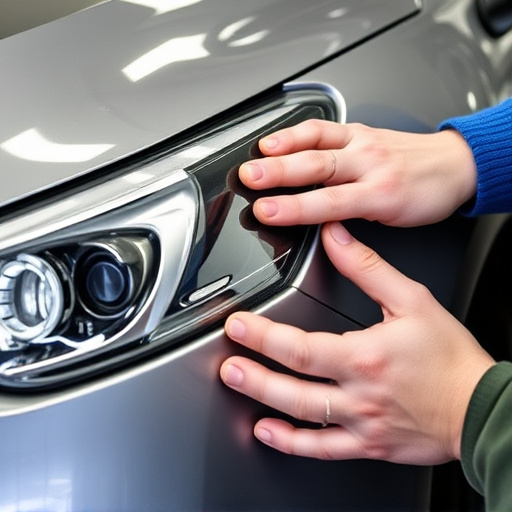
Candy paint, a modern automotive finish that has become increasingly popular for its vibrant, glossy, and unique effects, is more than just a pretty coat on a car’s exterior. This specialized coating is composed of complex layers designed to create depth and a metallic or iridescent sheen. Unlike traditional car paint, candy paint often includes fluorescent or neon pigments, as well as special additives that enhance its reflective properties. Its intricate makeup demands precision during the collision repair process, making it essential to have skilled technicians handle these repairs.
When a vehicle with candy paint suffers damage, such as a dent or scratch, the challenge lies in restoring the original aesthetic without compromising the paint’s distinct appearance and quality. Candy paint collision repair requires a deep understanding of the material’s properties, including its tendency to chip or fade improperly if not handled correctly. Therefore, technicians must employ specialized tools and techniques to blend repairs seamlessly into the surrounding paintwork, ensuring the vehicle retains its stunning, one-of-a-kind finish—a task that calls for expert proficiency in car paint repair.
– Differences from traditional paints and finishes
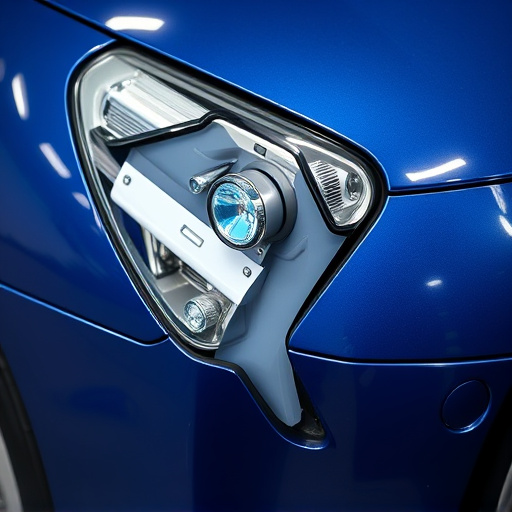
Candy paint collision repairs stand apart from traditional painting and finishing methods due to their intricate nature and specialized requirements. Unlike conventional paints, candy paints offer a range of dramatic visual effects, including iridescence, metallics, and unique color shifts that captivate the eye. These captivating finishes are achieved through complex formulations involving advanced pigments, resins, and coatings.
The challenge lies in the fact that candy paint collision repairs demand precision and expertise to restore these intricate finishes without compromising the vehicle’s original appearance. Unlike straightforward vehicle body repair tasks, restoring candy paint requires specialized tools, techniques, and a deep understanding of the paint’s composition. Technicians must carefully match the original shade, replicate the subtle variations in hue and sheen, and ensure a flawless blend with surrounding unharmed areas – all while addressing the underlying collision damage. This meticulous process demands skills beyond typical vehicle restoration, making it crucial to trust experienced professionals for optimal candy paint collision repair results.
Candy paint collision repairs present a unique challenge due to the specialized nature and intricate composition of these finishes. Skilled technicians are essential to ensure precise matching, as even the slightest misstep can reveal the underlying damage. With their expertise, these professionals can restore not just the car’s exterior, but also its original aesthetic appeal, ensuring that every detail aligns perfectly with the vehicle’s distinct candy paint finish. When it comes to candy paint collision repair, nothing less than exceptional craftsmanship will do.
